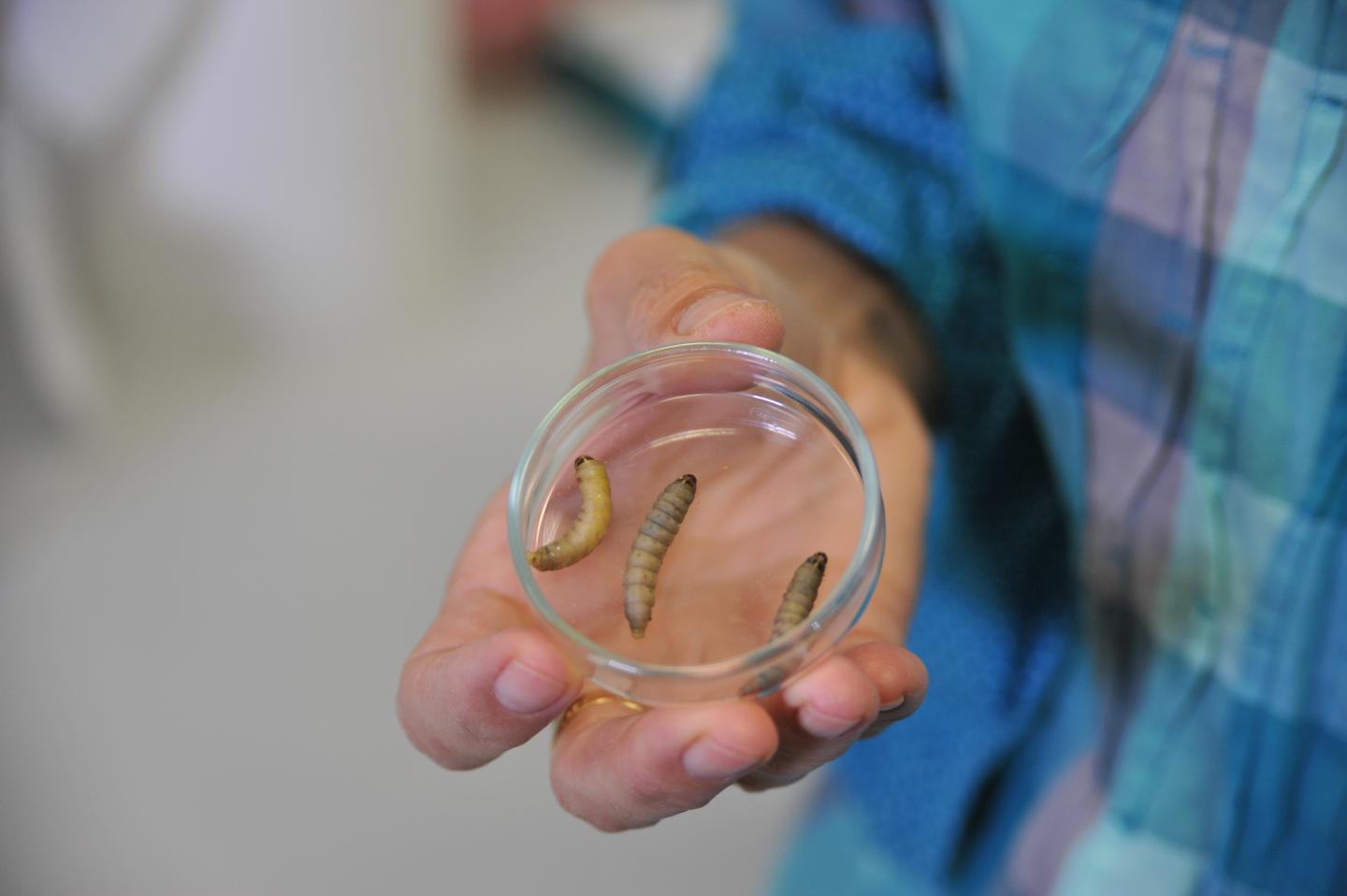Check out some of the most interesting science news published this week:
1. Plastic-Eating Caterpillar

It’s one of those scientific discoveries that happened entirely by accident. Federica Bertocchini was busy removing waxworms from her honey beehives when she noticed that the plastic bag where she was collecting the caterpillars had become riddled with holes. The caterpillars were the larvae of the moth Galleria mellonella. These moths lay their eggs in beehives, and when they hatch, the caterpillars feed on the wax.
Back at the lab, Bertocchini and her team confirmed that these caterpillars can indeed digest polyethylene, the most common plastic. Their ability to digest polyethylene could be related to their consumption of wax, since the chemical structure of both compounds is similar. Although polyethylene is a very useful material—its main application is in packaging, including shopping bags—it is creating important ecologic problems. Plastic bags are known to clog landfills and become troublesome in the ecosystems that they enter. Animals often eat them by mistake, or become entangled in them and die. Although these waxworms are not the first organisms discovered to degrade plastic, the rate at which they do it is very surprising. Experiments with plastic shopping bags revealed that 100 worms could consume 92 mg of plastic in 12 hours, which is a rate more than 1000 times higher than that of other previously reported plastic-consuming organisms.
Bombelli, P., et al. Current Biology. DOI: http://dx.doi.org/10.1016/j.cub.2017.02.060
2. Gut Bacteria Can Influence What Animals Eat
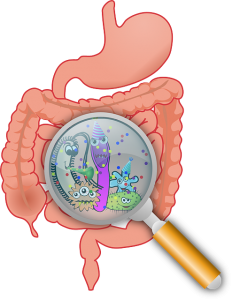
Several recent studies have linked the bacteria present in the body, the microbiome, with changes in the brain and behavior. Now a group of researchers has found evidence suggesting that gut bacteria can influence animal appetite. Scientists working with the fruit fly, Drosophila melanogaster, recently observed how the presence of certain bacteria species in their gut affects their food preference. When fruit flies are fed a diet deficient in essential amino acids, their reproduction rate markedly decreases and their preference for protein-rich yeast increases significantly. The mechanism through which an amino acid deficiency leads the flies to change their food choices is not entirely understood. In this study, scientists found that bacteria commonly found in the gut of wild fruit flies managed to override the flies’ need to consume protein when fed food that lacked essential amino acids. Even more, the flies that were colonized by these bacteria also didn’t experience a decline in reproduction rate. Surprisingly, the researchers didn’t find evidence that the bacteria provided the lacking essential amino acids to the flies. Furthermore, the flies tended to eat more from food that contained the bacteria than food that didn’t, suggesting that they can alter their feeding patterns to obtain the protective action of the bacteria.
Leitao-Goncalves, R., et al. PLOS Biology. DOI https://doi.org/10.1371/journal.pbio.2000862
3. Synthetic Adhesive Inspired by Gecko Feet
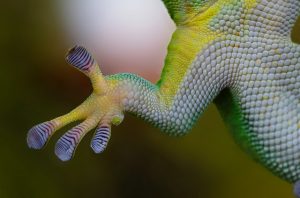
Nature has always been an important source of inspiration for researchers and innovators. This time, scientists developed a new adhesive inspired by the feet of geckos. Geckos, a diverse group of lizards native to warmer climates, are remarkable for their ability to climb up vertical walls and even across ceilings. They can do this thanks to their adhesive toe pads, which are covered in setae, very fine hair-like structures. Different adhesives have been developed mimicking the gecko’s feet, but working on wet conditions has remained a challenge. A potential solution to this problem is the use of hydrogels, which change their stickiness properties by swelling or shrinking depending on the pH. Now, a group of researchers has developed a double-sided adhesive that consists of a membrane covered by hydrogel on both sides. Their experiments showed that the material was capable of switching from high friction and adhesion at a low pH, to low friction and adhesion at high pH, even when wet. A synthetic adhesive capable of working in wet environments opens up a whole range of underwater applications, including underwater robotics and sensors.
Ma, S., et al. The Journal of Physical Chemistry C. DOI: 10.1021/acs.jpcc.7b01305
4. Baby Humpback Whales Whisper to Avoid Predators
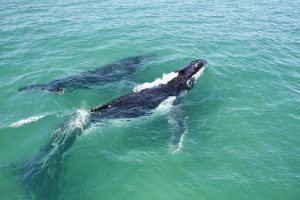
For newborn baby whales, the ocean can be a dangerous place. Humpback whales migrate from their feeding grounds near the north and south poles to warmer tropical waters every year to breed and mate. Afterwards, they return to their higher latitude range with their calves in tow. For a newborn calf, the journey is long and fraught with perils. Exmouth Gulf in Western Australia is a known spot where humpback whale cows and calves rest on their journey south. The researchers tagged mothers and calves to study their behavior without disrupting them. They found that whale calves communicated with their mothers using low volume sounds, much lower than adult humpback whale vocalizations. These sounds, the equivalent of whale whispers, probably to avoid drawing unwanted attention both from male whales who would turn the mother’s attention away from the calf, and from eavesdropping predators. Killer whales are known to hunt humpback calves in the area. Unfortunately, their low-level communications could mean that they are more easily disturbed by encroaching human activities, such as the use of powerboats.
Videsen, K., et al. Functional Biology. doi: 10.1111/1365-2435.12871
5. Medical Rulebook for Astronauts Coming Soon
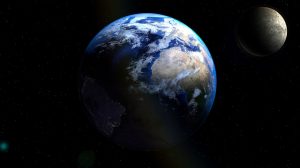
Long-term outer space travel has always been an exciting topic, and now it seems more possible than ever, with plans of manned missions to Mars and even colonizing the moon. In anticipation of this, scientists are working on the publication of a set of medical guidelines for astronauts and all those traveling outside of our planet for extended periods of time.
Researchers from the University of Plymouth and Northumbria University, the Aerospace Medical Association (AsMA), the European Space Agency (ESA), the Royal Air Force (RAF), the International Space University, and Blue Abyss are putting together a Review Group to be launched in May of this year that will systematically analyze all the publications in aerospace medicine. They aim to understand the challenges that astronauts’ bodies will face, such as the effects of microgravity, and will also advice on how to deal with problems the astronauts might face when coming back to Earth. Their conclusions will result in a rulebook intended to help keep all those travelling in space in good health during long trips.
Click here to learn more about this.
